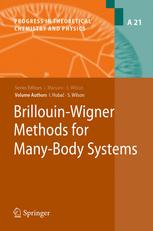

Most ebook files are in PDF format, so you can easily read them using various software such as Foxit Reader or directly on the Google Chrome browser.
Some ebook files are released by publishers in other formats such as .awz, .mobi, .epub, .fb2, etc. You may need to install specific software to read these formats on mobile/PC, such as Calibre.
Please read the tutorial at this link: https://ebookbell.com/faq
We offer FREE conversion to the popular formats you request; however, this may take some time. Therefore, right after payment, please email us, and we will try to provide the service as quickly as possible.
For some exceptional file formats or broken links (if any), please refrain from opening any disputes. Instead, email us first, and we will try to assist within a maximum of 6 hours.
EbookBell Team

4.3
98 reviewsIn twenty-first century science, computational modelling is a powerful tool for the study of matter on a nanoscale. It complements an increasing range of experimental probes providing new or more accurate measurements in nanoscience and nanotechnology. The theoretical apparatus upon which electronic structure models are built determines their computational tractability which in turn determines their utility in applications to systems of increasing complexity.
The accurate description of the effects of electron correlation is of central importance in ab initio electronic structure theory of atomic and molecular systems. Many body methods, in particular many-body perturbation theory and various coupled cluster expansions, are firmly established as the methods of choice in calculating electron correlation energies. Second order, Moeller-Plesset perturbation theory is the most widely used ab initio quantum chemical technique. Coupled cluster theory with single and double excitations and a perturbative estimate of the contribution of triple excitations is often regarded as a best compromise of accuracy and computational tractability. Both of these methods employ a single reference formalism which is not adequate for studies of systems involving significant quasidegeneracy effects such as bond breaking and bond making. Such studies require the use of a multireference formalism. However, the usual approach to the many-body multireference problem based on the Rayleigh-Schrödinger formalism suffers from the appearance of ‘intruder states’ which can destroy the utility of the method. For more than thirty years a robust approach to the mulitreference correlation problem has been lacking. The little used Brillouin-Wigner formalism shows considerable potential in that it avoids `intruder states'. This volume brings together in a single volume recent leading edge research developments in this area.
Brillouin-Wigner Methods for Many-Body Systems provides an introduction to many-body methods in electronic structure theory for the graduate student and post-doctoral researcher. It provides the researcher in many-body physics and theoretical chemistry with an account of Brillouin-Wigner methodology as it has been developed in recent years to handle the multireference correlation problem and defines the frontiers of this research field.
This volume is of interest to atomic and molecular physicists, physical chemists and chemical physicists, quantum chemists and condensed matter theorists, computational chemists and applied mathematicians.
---------------------------------------------------------------------------------------------------------------------
"This book on "Brillouin-Wigner methods for many-body systems" by Hubac and Wilson is perhaps the first comprehensive treatise on the subject. The authors are both internationally recognised experts in the field and are to be congratulated on their clear and thorough presentation of the present 'state of the art'. I recommend the book to anyone working in the field."
(Roy McWeeny, Emeritus Professor, University of Pisa, Iyaly)
"I strongly recommend the book by Professors Hubac and Wilson on Brillouin-Wigner Perturbation Theory. From their masterly introduction to the most technical details, this book will be an inspiration to anyone interested in the use of modern perturbation theory in theoretical chemistry and physics."
(Henry F. Schaefer III, Graham Perdue Professor of Chemistry and Director of the Center for Computational Quantum Chemistry, University of Georgia, USA)
"The book of I.Hubac and S.Wilson is very comprehensive.What is particularly interesting is a new fresh look on intruder state problem. Any serious student of Brillouin Wigner theory applied for many body systems should read this book."
(J. Cížek, Emeritus Professor, University of Waterloo,Canada)
"Ever since the introduction of the Brillouin-Wigner version of the coupled-cluster method by Hubac and Neogrady in 1994, there has been a conspicuous attention paid to this approach, particularly by the Slovak and Czech quantum chemistry schools. Although lacking the exact size-extensive property, its attractiveness stems primarily from its ability to overcome the problems of intruder states that often plague standard multireference approaches. It is commendable that the authors gathered in this monograph the relevant up to date developments in this field of endeavour. The book will undoubtedly
be very much appreciated by both students and practitioners dealing with molecular electronic structure calculations."
(Josef Paldus, Distinguished Professor Emeritus, University of Waterloo, Canada)